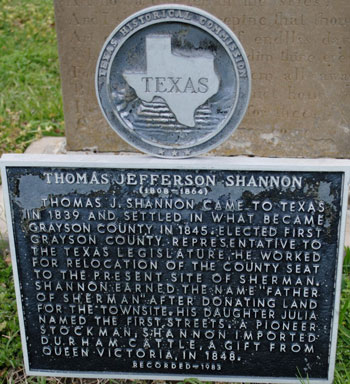
Several years ago, I purchased a small collection of Frontier Times, a monthly magazine of “Frontier History, Border Tragedy, Pioneer Achievement”. J. Marvin Hunter published the issues from his office in Bandera, Texas. While some of the tales are just that, others contain good information if scrutinized carefully.
From the June 1926 issue I came across an interesting item, if it is true. If not, it’s a great story of the Texas Frontier in the 1840s. The storyteller was the last descendent of Colonel Thomas Jefferson Shannon, a “bluff, hard riding, sharp-shooting plainsman.” He is best remembered for bringing the Red Durham strain of Durham cattle to Texas. You may have heard of Bull Durham tobacco. The image of Bull Durham was taken from a Red Durham, first brought to Texas, by Colonel Shannon.
Colonel Shannon wanted to improve his herd of long-horned cattle, “a thin-flanked, long-legged critter with a tremendous sweep of horn but not always impressive poundage.” In other words, the longhorn easily adapted to the brushlands of South Texas, but true Texas cattlemen wanted steers with more weight. Somehow, Colonel Shannon managed to get his hands on an English magazine with an article about the Queen’s Durham herd.
It seems that Colonel Shannon believed that he could strengthen his longhorn herd with the introduction of Durham stock. The best source of Durham cattle was the Queen of England and Empress of India. Colonel Shannon set down and promptly wrote a letter to Her Majesty inquiring about the cost of one bull and two female cows. Now remember this was the 1840s, no railroads in Texas, extremely slow mail service, and no easy way to transport the cattle, even if the Queen assented.
Several months later he received a letter from Buckingham Palace. Prince Albert wrote that the Queen was away but as soon as she returned he would bring the matter to her attention. Prince Albert felt sure the Queen would be willing to sell or even give Colonel Shannon the small herd of Red Durham.
Two months later, Queen Victoria replied. She would be glad to give the colonel the cattle he requested if he could send proof of secure transportation once the livestock reached New Orleans. Colonel Shannon forwarded full proof of more than adequate transportation to his ranch from New Orleans. Queen Victoria handpicked the three animals and supervised preparations for the first part of the journey.
Colonel Shannon’s method of transporting the livestock to North Texas was unique, to say the least. He placed them in wagons, no descriptions given. At frequent intervals he unloaded them, fed and watered them, and allowed them to graze for a day or two. They arrived safely to his ranch. He was able to introduce the new breed that quickly spread across the region.
Periodically, Shannon sent reports of the stock to the Queen. He even named his first daughter Victoria and one of his sons Albert. According to Texas History Online (tshaonline.org) the story is true. He settled near the new town of Sherman with his Red Durham herd. Shannon died there in 1864.
